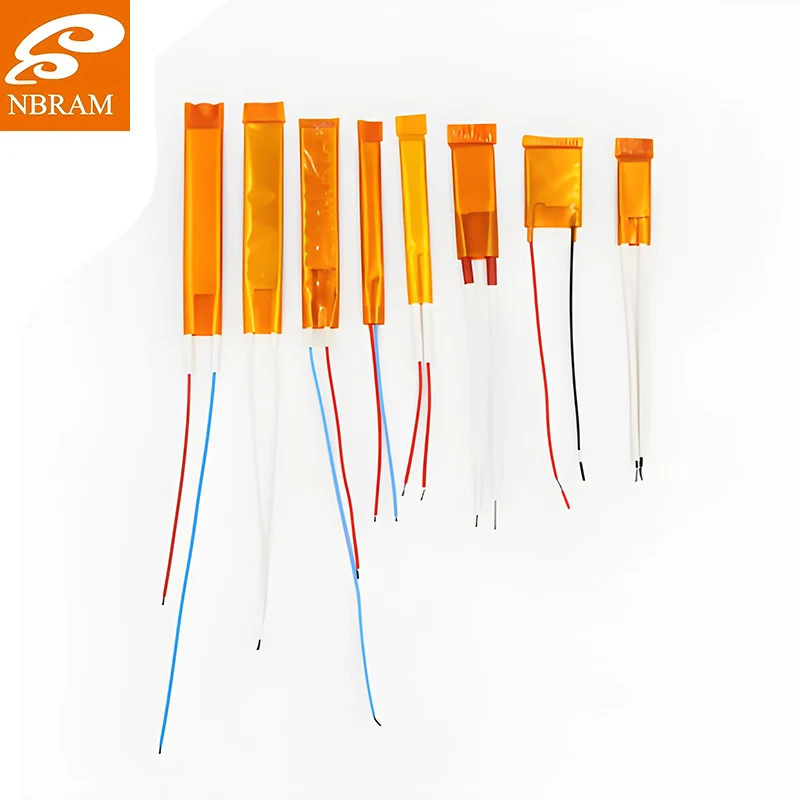When your application demands superior thermal stability and corrosion resistance, NBRAM’s ceramic heating element deliver relentless performance in environments where metal or mica-based heaters fail. Ideal for high-temperature industrial furnaces, food processing equipment, and semiconductor manufacturing, our alumina-based ceramic cores ensure uniform heat distribution up to 1,200°C with minimal thermal expansion. Customizable in multiple geometries (tubular, plate, or custom shapes) with integrated thermocouples for precise control. As your OEM partner, NBRAM provides rigorous quality validation, including thermal shock testing and dielectric strength verification. Request a performance comparison report today—optimize your thermal system with ceramics engineered to outlast your equipment.
NBRAM’s ceramic heating element dominate in high-temperature and corrosive scenarios: In semiconductor diffusion furnaces, our silicon carbide-coated elements maintain 1,000°C for months without degradation, enabling precise dopant activation. For food packaging machinery, we use FDA-approved alumina ceramics that resist fatty acids and steam, ensuring hygiene compliance while reducing energy use by 20% versus metal heaters. Automotive clients leverage our PTC (Positive Temperature Coefficient) ceramic discs for EV battery preheating, where self-limiting power prevents overheating risks. Additional innovations include porous ceramic variants for uniform air heating in industrial dryers and ultra-fast response ceramic cartridges for 3D printer hotends. All designs prioritize zero VOC emissions and mechanical robustness—surviving thermal shocks from rapid cooling cycles.
|
Core Materials |
Alumina (96%–99.5%), Silicon Carbide (SiC), or PTC ceramic formulations |
|
Max Operating Temperature |
800°C (standard), 1,200°C (SiC models), 1,500°C (MoSi2-coated) |
|
Thermal Shock Resistance |
ΔT >500°C (quench survival per ASTM testing) |
|
Power Density |
10–40 W/cm² (dependent on surface treatment and cooling) |
|
Resistance Tolerance |
±5% standard, ±1% for precision applications |
|
Terminal Types |
Threaded studs, ceramic lead channels, or flying leads with braided insulation |
|
Certifications |
UL 1030, IEC 60601 (medical), ISO 9001, and custom material traceability |
|
Life Expectancy |
5,000–20,000 hours at rated temperature |
NBRAM’s ceramic heating element begin with high-purity alumina (96%–99.5% Al₂O₃) or silicon carbide powders, isostatically pressed at 150 MPa to form dense, void-free cores. The green bodies are sintered at 1,600°C–1,800°C in atmosphere-controlled kilns, achieving >98% theoretical density for optimal thermal conductivity. Heating coils—platinum for extreme temperatures or nickel-chromium for cost-efficient models—are wound onto ceramic formers with robotic precision, then encapsulated via secondary sintering to create hermetic seals. For critical applications like aerospace, we add molybdenum disilicide coatings to boost oxidation resistance at 1,500°C+.
Each element undergoes thermal shock testing by cycling between 800°C and room temperature water (per ASTM D3529), with rejection for any microcracking. A European industrial oven manufacturer reported 3+ years of continuous operation in glass tempering lines—outlasting previous suppliers by 2x. We also offer customizations like drilled passages for thermocouple integration or machined grooves to enhance surface area for convection heating. From laboratory analyzers to steel annealing furnaces, NBRAM’s ceramic solutions merge millennia-old material science with cutting-edge thermal engineering.
